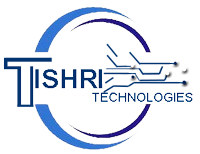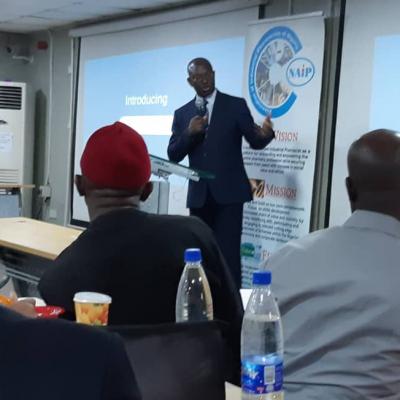Is your Windows 11 computer not recognizing the USB device and showing the Unknown USB Device, Port Reset Failed error? If yes, then you are not alone in this. Many users have reported seeing this error message upon connecting USB devices to their computers.
Fortunately, it's a very common issue and can easily be fixed. This guide will go through all the working solutions that will help you troubleshoot this error message for good.
What Causes the Unknown USB Device, Port Reset Failed Error in Windows 11?
USB devices are generally easy to use with computers. But sometimes, you might face different errors upon connecting them to your computer. One of these errors is the Unknown USB Device, Port Reset Failed error that appears due to the following reasons:
- Corruption in the latest software update
- Misconfigured USB driver settings.
- Corrupt USB devices or drivers.
- Outdated BIOS
Knowing the reasons behind the error message, let's get into all the working fixes.
1. Try the Basic Repairs
The first thing you must do whenever you come across the Unknown USB Device, Port Reset Failed error is to restart your device. Restarting the computer will fix the issue if a temporary glitch is the reason behind it.
If restarting the computer wasn't helpful, try plugging the USB device into a different USB port. Doing this will be especially helpful if a broken USB port is causing the problem.
Sometimes, the message can appear due to corruption in the OS version installed on your computer. The solution, in this case, is to download the latest Windows update. To do this, open the Settings menu, and select Windows Update from the left panel. Click the Check for updates button and wait until Windows checks for and download any available updates.
2. Look for Hardware Changes
The Device Manager comes with a Scan for hardware changes option, which you can use whenever a connected USB device is not responding or throwing an error message. You can use this option by following the below instructions:
- Open the Power menu by pressing the Win + X hotkeys.
- Choose Device Manager from the list at crops up.
- Right-click on the Universal Serial Bus controllers node and select the Scan for hardware changes option.
That's it. Now, wait until the scan is complete. Once done, check if the issue continues.
3. Use the Hardware and Devices Troubleshooter
Windows offers various troubleshooters that you can use to get rid of different kinds of system issues. One of these troubleshooters is the Hardware and Devices troubleshooter, which you can use to eliminate most hardware-related issues.
Here's how to use the Hardware and Devices troubleshooter:
- Open the Run dialog box by pressing the Win + R hotkeys.
- In the search bar, type msdt.exe -id DeviceDiagnostic and press Enter.
- Click the Advanced hyperlink and check the Apply repairs automatically box.
- Click Next.
The Hardware and Devices troubleshooter will now look for and automatically fix any available hardware issues on your computer.
4. Disable Fast Startup
Windows has a fast startup feature that you can enable to fasten your computer's boot speed. But on the negative side, enabling this feature can also result in different system issues, including the Unknown USB Device, Port Reset Failed error.
So, try disabling this feature and check if it makes any difference. Here's how:
- In the Start menu search bar, type control panel and press Enter.
- Change the View by category to Large icons.
- Select the Power Options.
- Click the Choose what the power button does option in the left panel.
- Click Change settings that are currently unavailable.
- In the Shutdown settings section, uncheck the Turn on fast startup box.
- Click the Save changes button.
Next, restart your computer and check for the problem.
5. Download the Latest Driver Update
The best way to eliminate hardware issues is to download its driver update. Here are the steps to do it:
- Open the Device Manager.
- Double-click on the Universal Serial Bus controllers node to expand it.
- Right-click on the problematic device, and choose Update driver from the context menu.
- In the new window that crops up, select the Search automatically for drivers option.
Now, wait until Windows searches for any available driver update online and install it on your computer.
6. Reinstall All the USB Controllers
If updating the driver was not helpful, you can try reinstalling all the devices under the Universal Serial Bus controllers. To do this, follow the below steps:
- In the Device Manager, expand the Universal Serial Bus controllers node.
- Right-click on the problematic device and choose Uninstall device.
Next, restart your computer and plug in the USB device again. Check if you still see the error message. If yes, continue with the guide.
7. Disable the USB Selective Suspend Setting
Disabling the USB Selective Suspend setting is another thing you can do to get rid of the problem at hand. Here's how to do it:
- In the Control Panel, navigate to System and Security > Power Options > Change plan settings.
- Choose the Change advanced power settings option in the following window.
- Expand the USB settings in the Power Options screen, and double-click on the USB selective suspend setting.
- Choose Disabled for both On battery and Plugged in options.
- Click Apply > OK to save the changes.
8. Update Your BIOS
Are you still facing the problem? If yes, then probably outdated BIOS is the culprit.
An outdated BIOS can cause issues like low system performance and stability, and incompatibility with certain devices. It can also cause the Unknown USB Device, Port Reset Failed error. So, update your BIOS to fix the issue.
Fixing the Unknown USB Device, Port Reset Failed Error
Everyone wants a hassle-free connection between a USB device and a computer. But sometimes, the computer can run into various issues upon connecting the USB device to the computer.
If you see the Unknown USB Device, Port Reset Failed error in the Device Manager; you now know what's causing the problem and how to fix it.
Source: MakeUseOff








